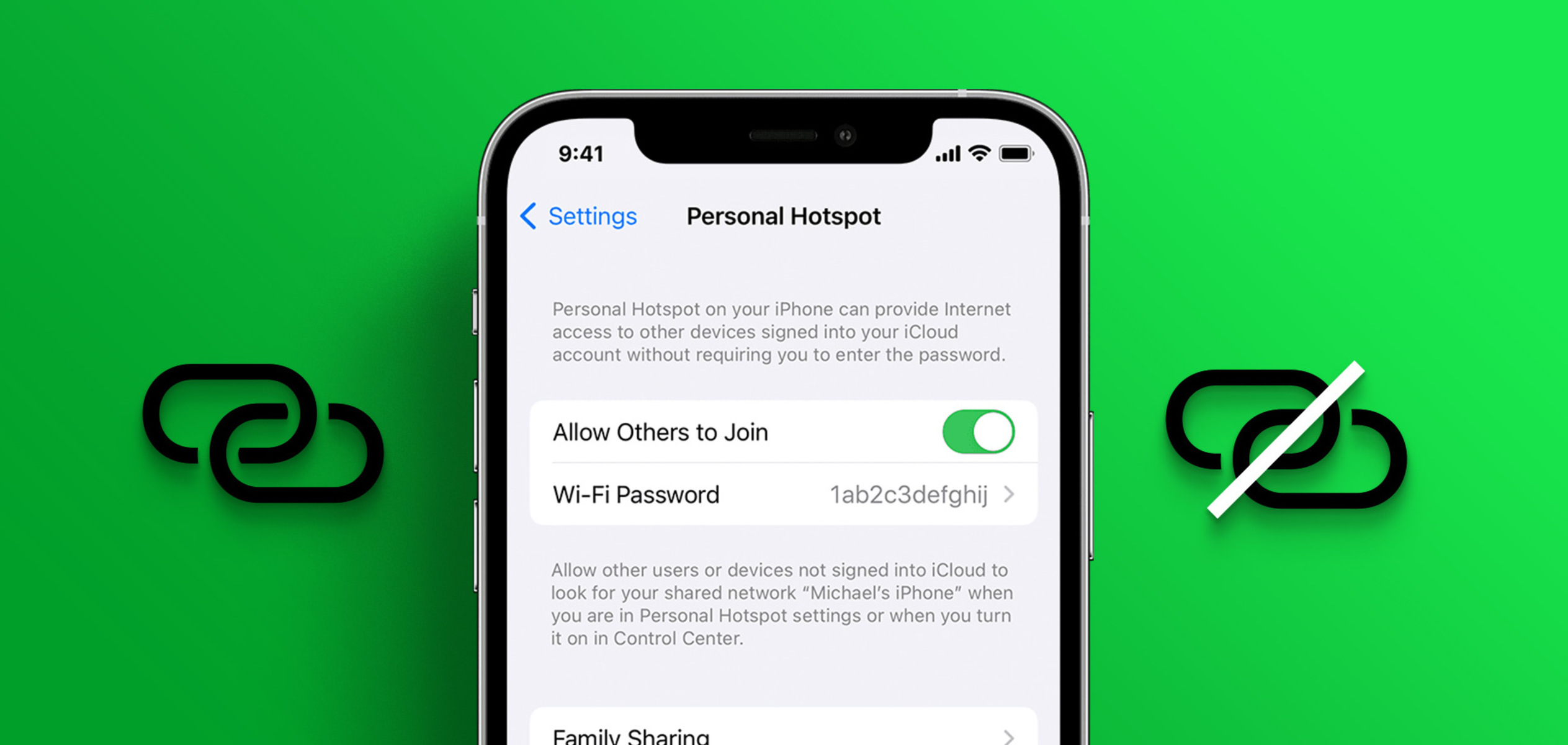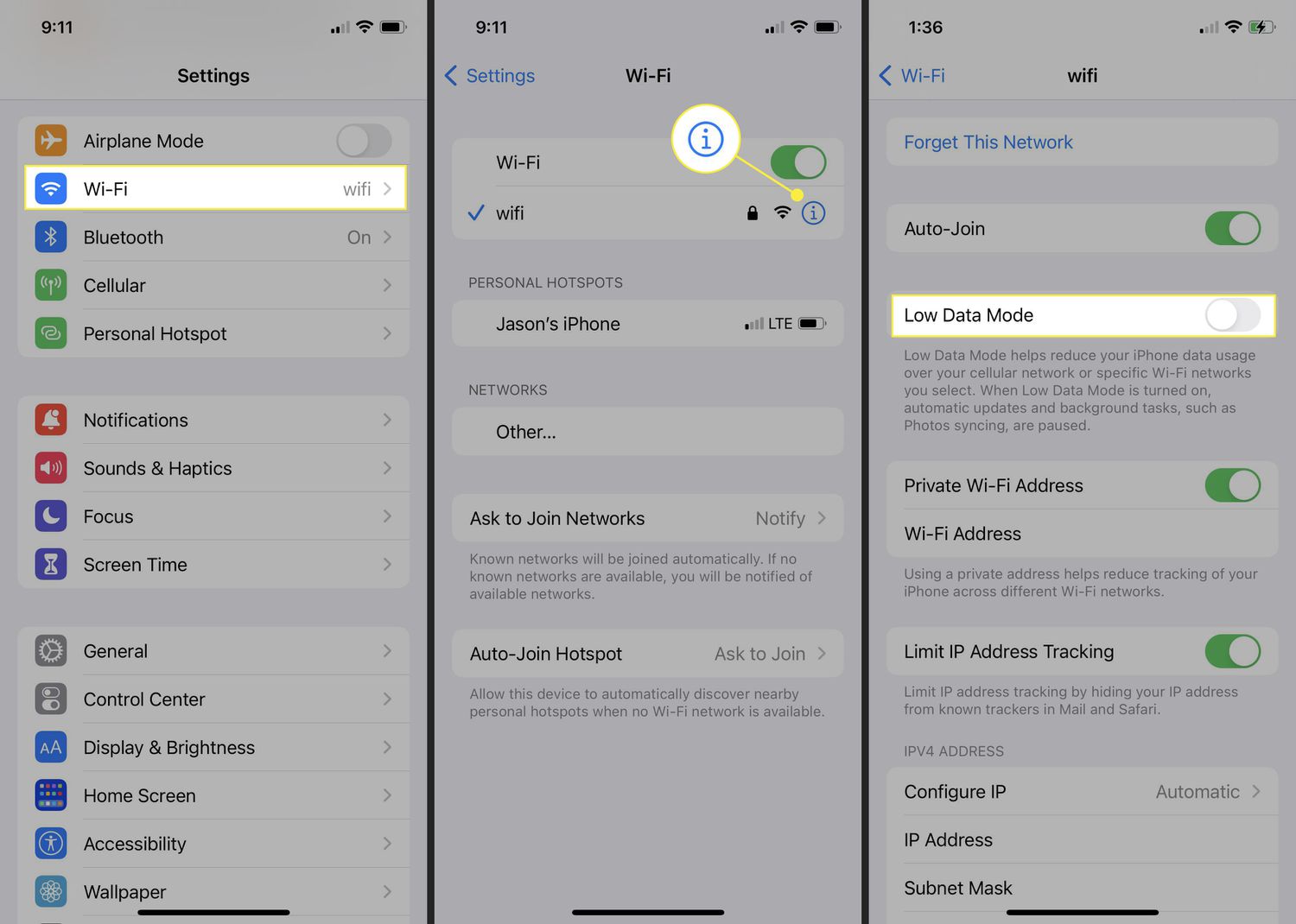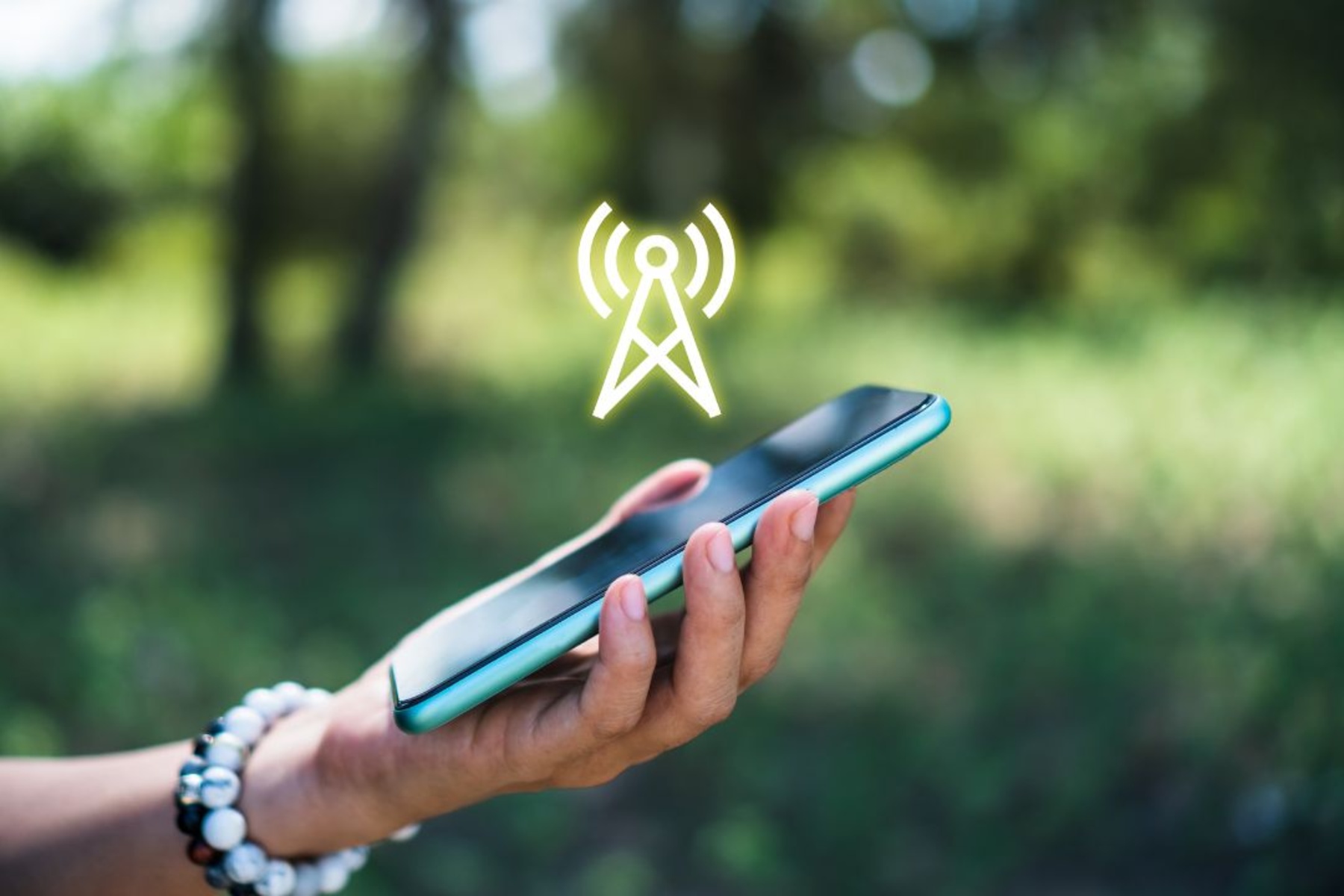Introduction
In our increasingly interconnected world, the need for seamless connectivity has become a fundamental aspect of our daily lives. Whether it's for work, education, or entertainment, having reliable access to the internet is non-negotiable. However, there are instances when traditional internet connections may not be available or are unreliable. This is where the use of a mobile hotspot comes into play, providing a lifeline for staying connected on the go.
The concept of a mobile hotspot is simple yet powerful. It allows users to share their mobile data connection with other devices, such as laptops, tablets, or other smartphones, effectively transforming their mobile device into a portable Wi-Fi router. This functionality has proven to be invaluable in various scenarios, from remote work and travel to emergency situations where traditional internet access is unavailable.
While mobile hotspots offer flexibility and convenience, there are instances when data usage needs to be optimized due to limited data plans or network constraints. This is where the concept of "Low Data Mode" comes into play. Low Data Mode is a feature available on many devices that allows users to reduce data usage by pausing automatic updates, background app refresh, and other non-essential data-consuming activities. When Low Data Mode is activated, it can significantly impact the behavior of a mobile hotspot, influencing how it manages and distributes data to connected devices.
Understanding the behavior of a mobile hotspot in Low Data Mode is crucial for users who rely on this feature to stay connected while minimizing data usage. It involves delving into the intricacies of data prioritization, bandwidth allocation, and overall network management to ensure an optimal and efficient experience for all connected devices.
In the following sections, we will explore the specific nuances of hotspot behavior in Low Data Mode, uncovering its benefits, drawbacks, and essential tips for optimizing its performance. By gaining a deeper understanding of this topic, users can make informed decisions regarding the use of mobile hotspots in Low Data Mode, empowering them to stay connected while effectively managing their data resources.
What is Low Data Mode?
Low Data Mode is a feature integrated into various devices, including smartphones and tablets, designed to conserve data usage and optimize network performance. When activated, Low Data Mode prioritizes essential network activities while reducing or pausing non-critical background tasks that consume data. This functionality is particularly beneficial for users with limited data plans, those operating in areas with poor network coverage, or individuals seeking to minimize data usage for cost-saving or efficiency purposes.
When Low Data Mode is enabled, the device takes a proactive approach to manage data consumption, ensuring that critical functions such as email, messaging, and browsing are prioritized while minimizing the impact of data-heavy activities. This includes pausing automatic app updates, reducing video streaming quality, and limiting background data usage for apps running in the background.
In essence, Low Data Mode acts as a data-saving mechanism, allowing users to exercise greater control over their data usage without compromising essential connectivity. By intelligently managing data-intensive tasks and optimizing network resources, this feature empowers users to make the most of their available data while maintaining a reliable and efficient online experience.
The implementation of Low Data Mode reflects a growing awareness of the need to balance connectivity with responsible data usage. It addresses the evolving demands of users who seek to stay connected while being mindful of data consumption, aligning with the broader trend of optimizing digital experiences for efficiency and sustainability.
As the digital landscape continues to evolve, the significance of Low Data Mode becomes increasingly pronounced, offering a practical solution for managing data usage in diverse scenarios. Whether it's navigating through areas with limited network coverage, operating within data-constrained environments, or simply aiming to exercise greater control over data consumption, Low Data Mode serves as a valuable tool for optimizing connectivity without excessive data usage.
In the context of mobile hotspot usage, understanding Low Data Mode is pivotal, as it directly influences how data is managed and distributed when sharing a mobile device's internet connection with other devices. This intersection between Low Data Mode and mobile hotspot functionality underscores the importance of comprehending the nuances of data optimization in a connected world.
Understanding Hotspot Behavior in Low Data Mode
When a mobile hotspot is utilized in Low Data Mode, it undergoes a series of nuanced adjustments to its behavior, aimed at optimizing data usage while maintaining reliable connectivity for connected devices. The interaction between Low Data Mode and hotspot functionality introduces a dynamic layer of data management, influencing how data is prioritized, allocated, and distributed across the network.
In Low Data Mode, the mobile hotspot takes on a more discerning role in managing data traffic. It prioritizes essential network activities, such as email communication, web browsing, and messaging, while imposing limitations on non-critical data-consuming processes. This proactive approach ensures that critical functions receive precedence, safeguarding vital connectivity for users while mitigating unnecessary data usage.
Moreover, the hotspot's behavior in Low Data Mode extends to bandwidth allocation and data distribution. It intelligently regulates the distribution of available bandwidth, optimizing the network's performance to accommodate essential tasks without overburdening the data connection. This strategic allocation of bandwidth ensures that connected devices can access the necessary resources while adhering to the constraints of Low Data Mode, striking a balance between connectivity and data conservation.
Additionally, the hotspot's data management in Low Data Mode encompasses the optimization of data-heavy activities. By pausing automatic app updates, reducing video streaming quality, and limiting background data usage for running apps, the hotspot actively curtails non-essential data consumption, aligning with the overarching goal of conserving data resources.
Furthermore, the behavior of a mobile hotspot in Low Data Mode reflects a conscientious approach to network management. It leverages data prioritization and intelligent distribution to uphold a seamless online experience for connected devices, fostering an environment where essential connectivity is preserved while non-critical data activities are prudently regulated.
Understanding the intricacies of hotspot behavior in Low Data Mode is pivotal for users seeking to strike a balance between connectivity and data optimization. By delving into the nuanced adjustments and proactive data management strategies employed by the hotspot in Low Data Mode, users can gain valuable insights into the dynamic interplay between data conservation and reliable connectivity.
In essence, the integration of Low Data Mode with mobile hotspot functionality underscores the evolving landscape of data optimization, where responsible data usage and efficient connectivity converge to meet the diverse needs of users in an interconnected world. This intersection encapsulates the adaptive nature of technology, where features harmonize to deliver a cohesive and optimized user experience.
Benefits of Using Hotspot in Low Data Mode
The utilization of a mobile hotspot in Low Data Mode offers a myriad of compelling benefits, underscoring its significance as a valuable tool for managing data usage while facilitating reliable connectivity for connected devices. By embracing Low Data Mode within the context of a mobile hotspot, users can leverage its advantages to optimize their online experience in diverse scenarios.
1. Data Conservation:
Low Data Mode empowers users to conserve their data resources by intelligently managing data usage across connected devices. When the hotspot operates in Low Data Mode, it prioritizes essential network activities while curbing non-essential data-consuming processes, effectively minimizing data usage without compromising critical connectivity.
2. Enhanced Efficiency:
The integration of Low Data Mode with a mobile hotspot fosters an environment of enhanced efficiency, where data-intensive tasks are prudently regulated to ensure optimal network performance. By intelligently allocating bandwidth and optimizing data distribution, the hotspot operates in a manner that balances connectivity needs with data conservation, fostering a streamlined and efficient online experience.
3. Cost Savings:
For users operating within the constraints of limited data plans, the utilization of a mobile hotspot in Low Data Mode translates to tangible cost savings. By minimizing data usage and prioritizing essential network activities, users can effectively maximize the value of their data plans, ensuring that their connectivity needs are met without incurring excessive data charges.
4. Reliable Connectivity:
Low Data Mode reinforces the reliability of a mobile hotspot, ensuring that essential connectivity is preserved while non-critical data activities are prudently regulated. This results in a consistent and dependable online experience for connected devices, even in scenarios where traditional internet access may be limited or unavailable.
5. Flexibility in Diverse Scenarios:
The benefits of using a mobile hotspot in Low Data Mode extend to diverse scenarios, including remote work, travel, and areas with limited network coverage. By leveraging the data conservation and efficiency-enhancing capabilities of Low Data Mode, users can stay connected and productive in various environments, regardless of data constraints or network limitations.
In essence, the integration of Low Data Mode with a mobile hotspot amplifies the value of data optimization, empowering users to make the most of their available data while maintaining a reliable and efficient online experience. By embracing the benefits of using a mobile hotspot in Low Data Mode, users can navigate the digital landscape with greater control over their data usage, ensuring that connectivity remains accessible and efficient in diverse scenarios.
Drawbacks of Using Hotspot in Low Data Mode
While the integration of Low Data Mode with a mobile hotspot offers compelling benefits, it is essential to acknowledge the potential drawbacks associated with this configuration. Understanding these limitations provides users with a comprehensive perspective on the practical implications of utilizing a mobile hotspot in Low Data Mode.
-
Reduced Functionality: One of the primary drawbacks of using a mobile hotspot in Low Data Mode is the potential for reduced functionality across connected devices. By prioritizing essential network activities and imposing limitations on non-critical data-consuming processes, certain features or applications on connected devices may experience restricted performance. This can impact the overall user experience, particularly for tasks that rely on consistent data access and real-time updates.
-
Impact on Multimedia Consumption: Low Data Mode's data conservation measures, such as reducing video streaming quality and pausing automatic app updates, can impede the seamless consumption of multimedia content across connected devices. Users may encounter limitations in streaming quality, delayed app updates, or restricted access to media-rich content, affecting their ability to engage with multimedia platforms effectively.
-
Potential Connectivity Constraints: In scenarios where multiple devices are connected to a mobile hotspot operating in Low Data Mode, there is a risk of encountering connectivity constraints, particularly during concurrent data-intensive activities. The prioritization and regulation of data usage may lead to instances where connected devices experience limitations in accessing bandwidth-demanding resources, potentially impacting the overall network performance.
-
User Experience Implications: The proactive data management strategies employed by a mobile hotspot in Low Data Mode can result in user experience implications, particularly for applications or services that rely on continuous background data usage. Activities such as real-time notifications, location-based services, and cloud synchronization may be affected, potentially leading to a diminished user experience for certain connected devices.
-
Adaptation Challenges: Users transitioning to a mobile hotspot in Low Data Mode may encounter adaptation challenges, especially if they are accustomed to unrestricted data usage. Adapting to the prioritization and regulation of data consumption enforced by Low Data Mode requires users to adjust their expectations and usage patterns, which may pose initial challenges and necessitate a period of acclimatization.
Understanding these drawbacks equips users with a nuanced perspective on the practical considerations associated with utilizing a mobile hotspot in Low Data Mode. While the benefits of data conservation and efficient network management are significant, it is essential for users to weigh these advantages against the potential limitations to make informed decisions regarding the utilization of a mobile hotspot in Low Data Mode.
Tips for Optimizing Hotspot Behavior in Low Data Mode
-
Selective Data Usage: Encourage users to prioritize essential tasks and limit non-critical data consumption while utilizing a mobile hotspot in Low Data Mode. This involves consciously allocating data resources to critical activities such as email communication, web browsing, and messaging, while minimizing the use of data-intensive applications or services that may not be immediately essential.
-
Scheduled Updates and Syncing: Advising users to schedule app updates, cloud synchronization, and data-intensive activities during periods of unrestricted data access can optimize hotspot behavior in Low Data Mode. By strategically timing these activities, users can leverage periods of available data resources to ensure that essential updates and syncing processes are completed efficiently.
-
Utilize Data-Saving Features: Encourage users to leverage data-saving features available on connected devices, such as enabling data-saving modes in web browsers, streaming applications, and operating systems. These features are designed to minimize data usage without compromising the overall user experience, aligning with the objective of optimizing hotspot behavior in Low Data Mode.
-
Device-Specific Data Management: Emphasize the importance of device-specific data management, where users can review and adjust data usage settings on individual connected devices. This includes enabling data restrictions for specific applications, managing background data usage, and optimizing data settings to align with the constraints of Low Data Mode, thereby contributing to a cohesive approach to optimizing hotspot behavior.
-
Network Monitoring and Adjustment: Encourage users to monitor network usage and adjust hotspot settings based on real-time data consumption patterns. By actively monitoring data usage across connected devices, users can make informed adjustments to hotspot behavior, ensuring that essential connectivity is preserved while non-critical data activities are prudently regulated.
-
Education on Data-Optimized Applications: Educate users on the availability of data-optimized applications and services that are designed to operate efficiently in low-data environments. By embracing applications that are tailored for data conservation, users can enhance the overall performance of a mobile hotspot in Low Data Mode, ensuring that essential connectivity is maintained while minimizing data usage.
-
Periodic Data Usage Reviews: Encourage users to periodically review their data usage patterns and adjust hotspot behavior in Low Data Mode based on evolving connectivity needs. By conducting regular assessments of data consumption and connectivity requirements, users can refine their approach to optimizing hotspot behavior, ensuring that data resources are utilized judiciously.
By implementing these tips, users can effectively optimize the behavior of a mobile hotspot in Low Data Mode, striking a balance between connectivity needs and data conservation. These proactive strategies empower users to make the most of their available data resources while maintaining a reliable and efficient online experience, reinforcing the value of responsible data usage in an interconnected world.
Conclusion
In conclusion, the integration of Low Data Mode with a mobile hotspot represents a dynamic intersection of responsible data usage and reliable connectivity. By understanding the nuanced behavior of a mobile hotspot in Low Data Mode, users can navigate the digital landscape with greater control over their data resources while maintaining a seamless online experience for connected devices.
The benefits of utilizing a mobile hotspot in Low Data Mode are underscored by its capacity to conserve data, enhance efficiency, and facilitate reliable connectivity in diverse scenarios. From cost savings to flexibility in remote work environments, the integration of Low Data Mode empowers users to optimize their data usage without compromising essential connectivity.
However, it is essential for users to be mindful of the potential drawbacks associated with utilizing a mobile hotspot in Low Data Mode, including reduced functionality, impact on multimedia consumption, and adaptation challenges. By acknowledging these limitations, users can make informed decisions regarding the utilization of a mobile hotspot in Low Data Mode, weighing its advantages against practical considerations.
To optimize the behavior of a mobile hotspot in Low Data Mode, users can implement proactive strategies such as selective data usage, scheduled updates and syncing, utilization of data-saving features, device-specific data management, network monitoring and adjustment, education on data-optimized applications, and periodic data usage reviews. These strategies empower users to strike a balance between connectivity needs and data conservation, ensuring that their data resources are utilized judiciously.
As the digital landscape continues to evolve, the integration of Low Data Mode with a mobile hotspot reflects a broader trend of aligning connectivity with responsible data usage. This convergence underscores the adaptive nature of technology, where features harmonize to deliver a cohesive and optimized user experience. By embracing the principles of responsible data usage and efficient connectivity, users can leverage the full potential of a mobile hotspot in Low Data Mode, navigating the interconnected world with confidence and control.

























